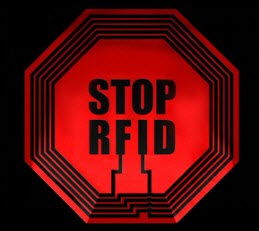How can I Shield my RFID Devices?
RFID Devices can be Shielded from Skimming
The U.S. Government has acknowledged the many operational concerns over the biometric passport and the smart cards. In an effort to prevent the passive “skimming” of RFID-enabled cards or passports, the U.S. Government’s General Services Administration (GSA) issued a set of test procedures for evaluating electromagnetically opaque sleeves. Electromagnetic opaque sleeves are devices that contain special materials (aluminum, etc…) to prevent the microchip in the passport or smart card from being read.
Shielding products must meet or exceed published standards. The United States government requires that when new ID cards are issued, they must be delivered with an approved shielding sleeve or holder.
Shielding Controversy
There are many contradicting opinions as to whether aluminum can prevent reading of RFID microchips. Some claim that aluminum shielding, essentially creating a Faraday cage, does work. Others claim that simply wrapping an RFID card in aluminum foil only makes transmission more difficult and is not completely effective at preventing it.
A Faraday cage is essentially a grounded metal cage that protects the microchip in the passport or smart card. The theory is that the Faraday cage will absorb the RF (Radio Frequency) microwaves coming from the RFID scanner/reading device. The effectiveness of the shield all depends on the frequency being used to the read the microchip.
Shielding Effectiveness
Shielding effectiveness depends on the frequency being used.
Low-frequency LowFID tags, like those used in implantable devices for humans and pets, are relatively resistant to shielding though thick metal foil will prevent most reads.
High frequency HighFID tags (13.56 MHz—smart cards and access badges) are sensitive to shielding and are difficult to read when within a few centimeters of a metal surface.
UHF Ultra-HighFID tags (pallets and cartons) are difficult to read when placed within a few millimeters of a metal surface, although their read range is actually increased when they are spaced 2–4 cm (1 – 2 inch) from a metal surface due to positive reinforcement of the reflected wave and the incident wave at the tag (microchip).
Improved methods of RFID shielding are now available with the development of an array of copper, silver, and stainless steel based woven fabrics. Uses of these fabrics range from window screens, bed canopies to clothing and other garments, all designed to shield you from RF frequencies that may affect your health or what you are carrying on you.
Upcoming Article:
Look out for our next article in this series – “Should I be Concerned About My Privacy from RFID?” You will find it informative and fascinating reading. Click HERE to read this article.
Smartcard RFID Shielding is crucial for the protection of stored personal data. This product will provide that protection!
Image: Stop RFID


